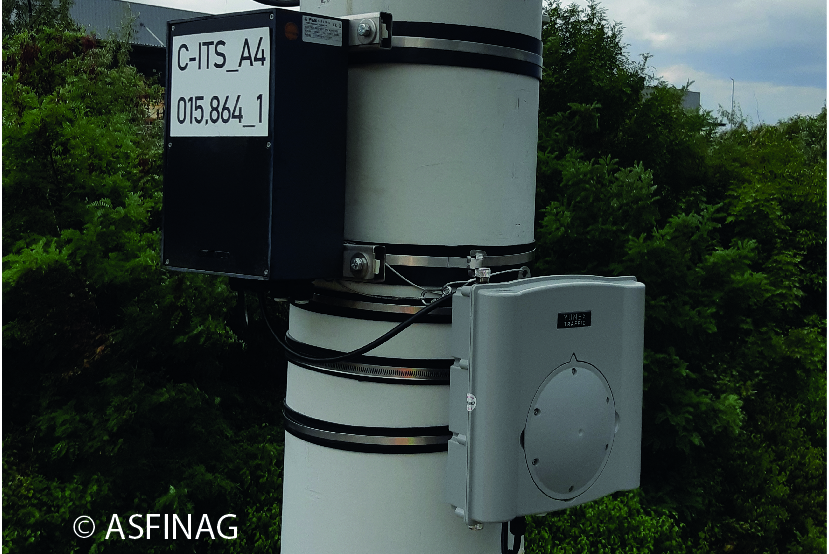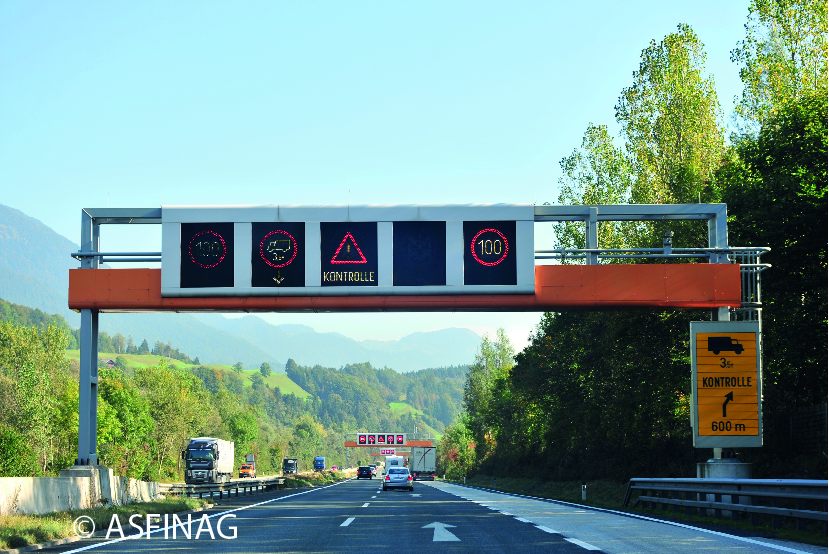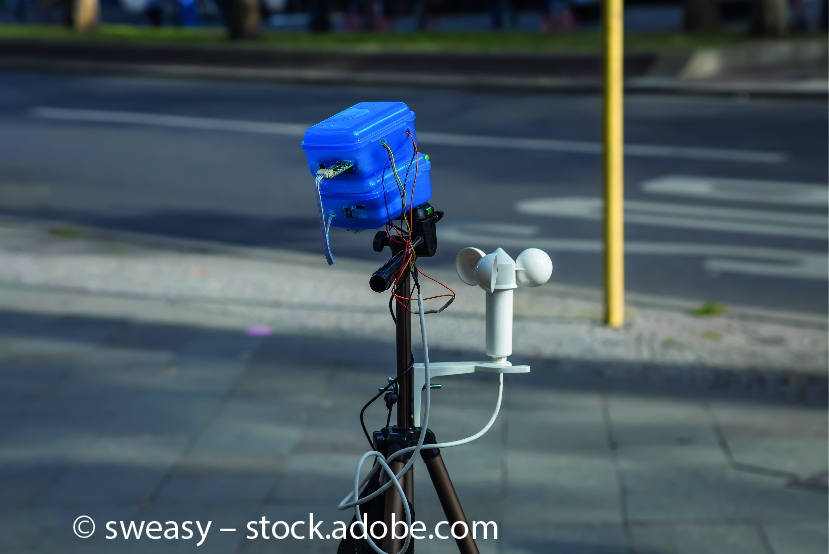Key figures
The project partners are collaborating to optimise cross-border traffic and transportation by implementing harmonised and synchronised Intelligent Transport Systems (ITS) applications on the high-level road network in those areas. Additionally, they are implementing Cooperative Intelligent Transport Systems (C-ITS) use cases based on C-Roads specifications in urban areas connected to the high-level road network. The following page presents statistical data on planned activities to provide a brief insight into the deployment of C-ITS use cases within the X4ITS project.

Planned installation of Roadside Units
A Roadside Unit (RSU) collects traffic data from a static sensing area along a road. The RSU then transmits this data to traffic control devices and a central traffic management center. These devices also serve as an information source for intelligent vehicles to collect future traffic information. (source)

Planned installation of Onboard Units
An Onboard Unit (OBU) is a device installed in a vehicle that transmits and collects data for various applications. An OBU is an electronic device installed in a vehicle. It records traffic and driving data and can connect to roadside and satellite navigation systems. (source)

Planned implemented or replaced Variable Message Signs
Variable Message Signs (VMS) are electronic and intelligent road traffic management signs that combine text and graphic variable messages for more effective traffic management. The versatility of variable message signs makes them suitable for providing traffic information in a variety of situations, including emergencies and road closures. The VMS system can be integrated with other traffic control and management systems. (source)

Planned implemented or replaced CCTV cameras
CCTV cameras are crucial for managing road networks. They are strategically placed at sensitive locations to aid traffic management, particularly in areas with frequent congestion and traffic queues, as well as at locations with a higher risk of accidents and traffic incidents. (source)

Planned kilometres of TEN-T roads equipped with roadside data collection equipment
Planned kilometres of secondary roads equipped with roadside data collection equipment
Roadside data collection equipment consists of traffic detection systems including traffic detection cameras, traffic counters, traffic and weather stations as well as CCTV cameras. All of these tools provide different but important information about road use and condition, leading to intelligent traffic management.

Planned multimodal or urban hubs equipped with digital infrastructure
Planned kilometres of secondary road network equipped with digital infrastructure
The digital infrastructure includes instruments such as variable message signs, CCTV cameras, and data collection equipment, as mentioned above. This digital infrastructure equipment will support traffic management on the roads.
C-ITS deployment in cities
The X4ITS project involves the implementation of C-ITS applications in cities, with a focus on use cases that accelerate public transport and increase road safety.
The following sections provide information on implementations of the Austrian cities of Vienna, Klagenfurt, and Linz, as well as the cities of Ljubljana and Budapest.
Upcoming developments in Vienna:
- Equipment of four to eight intersections with Roadside Units in the area of the C-Roads Austria 2 pilot project, in order to achieve synergies with the C-ITS equipment already in use.
- Implementation of hardware capable of detecting vulnerable road users.
- Installation of at least two On-Board Units in public transport buses.
Upcoming developments in Klagenfurt:
- Upgrade of up to 25 traffic lights with C-ITS technology to improve bus acceleration.
- Prioritisation of public transport will continue to be available throughout the city. Purchase of an additional 24 OBUs for KMGs bus fleet by 2026. Equipment of all 98 buses with OBUs to ensure that public transport is accelerated exclusively via C-ITS.
- Use of artificial intelligence to monitor traffic, and digital displays will warn road users without C-ITS to potential hazards.
- Participation in the EU´s '100 Climate-Neutral and Smart Cities' mission
Upcoming developments in Linz:
- Equipment of public transport buses and road vehicles with four to eight Roadside Units and four to six On-Board-Units.
- Equipment of approximately 25 junctions and road sections with C-ITS use cases.
- Deployment of C-ITS-enabled Roadside Units in the city centre.
Upcoming developments in the City of Ljubljana:
- Installation of at least 100 Roadside Units at the two main road entrances.
- Installation of Roadside data collection equipment at 120 intersections, on specific urban road sections connected to the TEN-T corridor.
- Equipment will be installed at 120 intersections, with each intersection receiving an average of four cameras, four ground traffic detectors, and four pairs of buttons to activate traffic lights.
- Upgrade of digital road system with deployment of TN-ITS.
- Deployment of the emergency vehicle approaching system at the main entrances to Ljubljana.
- Deployment of Green Light Optimal Speed Advisory (GLOSA) system on the main entrances to Ljubljana.
- Connection of the urban traffic control system to the Dynamic Simulation Traffic Model of Slovenia.
- Publication of urban traffic data through the National Access Point.
- Installation of two urban traffic data collection systems at the main entrances to the city.
Upcoming developments in Budapest:
- Development of a Traffic Management Plan for the northern Budapest region and the M0 motorway.
- Installation of new monitoring and traffic management equipment on at least 70km section, mainly in the Budapest area, according to the traffic management plans developed in the CROCODILE project.
- Implementation of C-ITS services in the Budapest area.
- Introduction of Day 1 and Day 1.5 services on the main routes in the north-west and south-west regions of Budapest, linked to the existing sites on the M0 expressway and the C-ITS service on the M1/M7 motorway.
- Implementation of new Roadside Units and C-ITS services along the Budapest Ring Road (M0) and the urban-interurban interfaces of Budapest.
- Integration of a dynamic database within the C-ITS traffic management system, alongside a TCC (Traffic Control Center) upgrade.
- Participation in the EU´s '100 Climate-Neutral and Smart Cities' mission, which aims to achieve climate neutrality by 2030.
